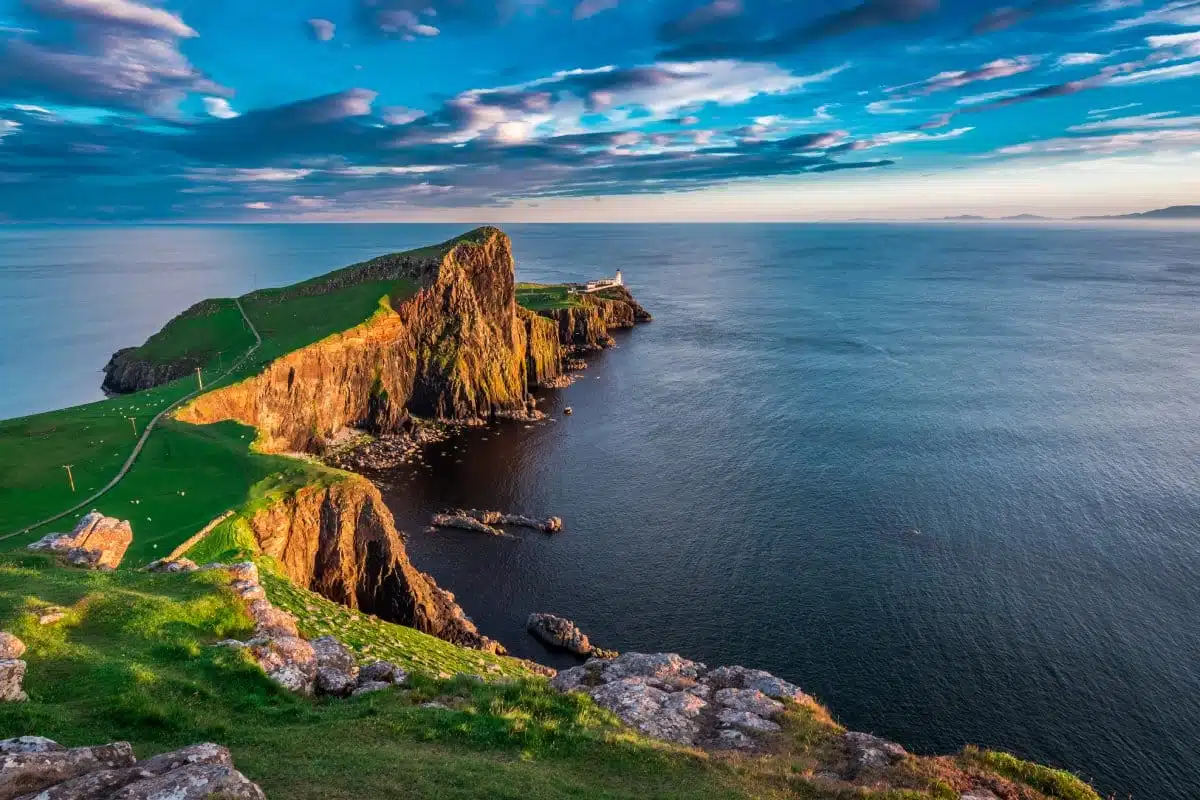The Scottish Isles, a diverse and sprawling archipelago, offer various experiences that range from the serene to the sublime. Each island’s unique character and landscape invites exploration and contemplation, promising visitors a journey through time, culture, and natural beauty. From the rugged cliffs and ancient sites of Orkney to the wild, windswept beaches of the Outer Hebrides, the Scottish Isles showcase the intertwined magic of nature and history. This guide explores the heart of these islands, highlighting key destinations and activities that encapsulate the essence of the Scottish Isles. It’s for the discerning traveler seeking to uncover the layers of history, culture, and natural splendor that define this remarkable region.
1. Isle of Skye
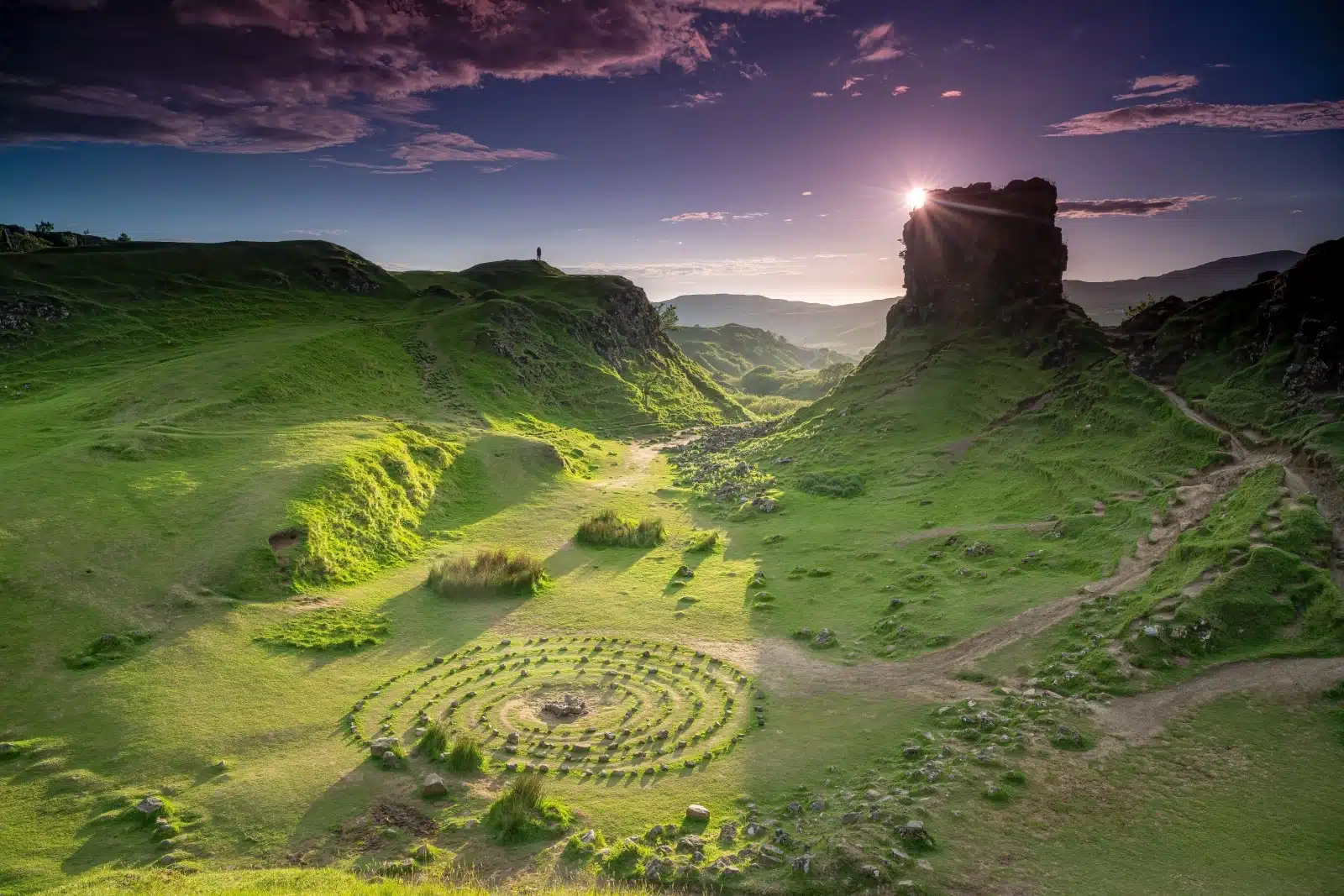
Image Credit: Shutterstock / Jiri Vlach
The Isle of Skye, known for its rugged landscapes, picturesque fishing villages, and medieval castles, is a jewel in the crown of the Scottish Isles. The island’s dramatic mountain ranges, including the Cuillin, offer some of Scotland’s most challenging and rewarding hiking. The Quiraing, a stunning landslip on the island’s northern part, provides breathtaking views and a sense of the island’s ancient geological history. Skye’s coastline, dotted with iconic landmarks such as Neist Point Lighthouse and the Old Man of Storr, is equally compelling, offering dramatic vistas at every turn. The island is also rich in cultural heritage, with sites like Dunvegan Castle and the Talisker Distillery showcasing the history and traditions of the Highlands.
Insider’s Tip: For an unforgettable experience, visit the Fairy Pools at dawn before the crowds arrive. The early morning light casts a magical glow on the crystal-clear waters, offering a serene and mystical atmosphere.
When to Travel: The best time to visit Skye is from May to September, when the weather is milder and the days are longer, allowing for more time to explore the outdoors.
How to Get There: Skye is accessible via the Skye Bridge from the mainland town of Kyle of Lochalsh. Alternatively, visitors can take ferries from Mallaig to Armadale or Glenelg to Kylerhea.
2. Orkney Islands
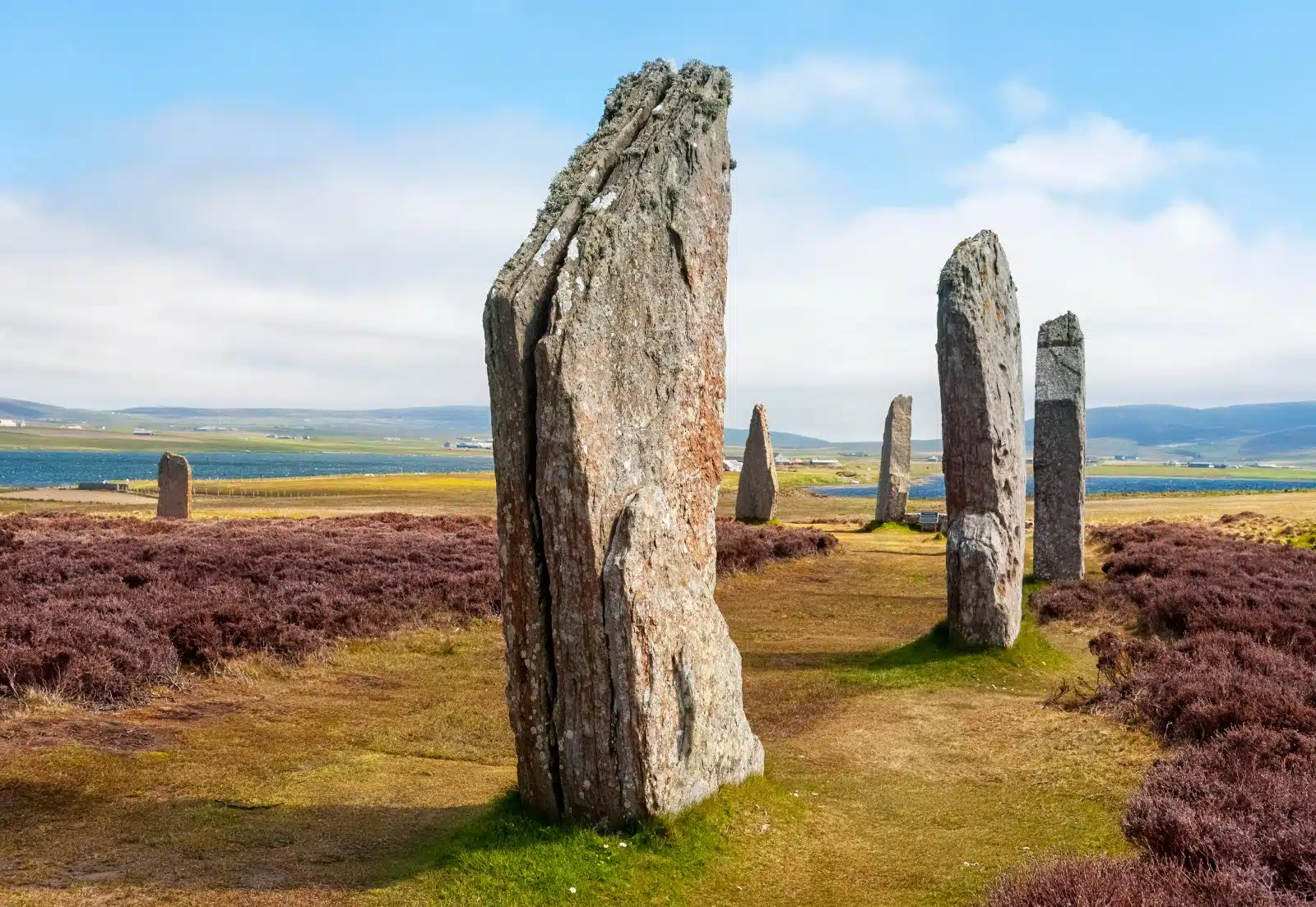
Image Credit: Shutterstock / Barbara Ash
The Orkney Islands, a UNESCO World Heritage site, is a stage of Scotland’s archaeological history. The heart of Neolithic Orkney is marked by the ancient ceremonial sites of the Ring of Brodgar, the Standing Stones of Stenness, and the well-preserved Neolithic village of Skara Brae. The islands also boast a remarkable Viking heritage, with the Norse Cathedral of St. Magnus in Kirkwall standing as a monument to Orkney’s Scandinavian past. The rugged coastline and abundant wildlife, including puffins and seals, make Orkney a haven for nature enthusiasts. The islands’ maritime history is further explored in the Orkney Museum and the Scapa Flow Visitor Centre, offering insights into the strategic importance of these waters during both World Wars.
Insider’s Tip: Make time to visit the Italian Chapel on Lamb Holm, a small masterpiece of art and spirit created by Italian POWs during World War II. Its story adds a poignant touch to the rich tapestry of Orkney’s history.
When to Travel: Late spring to early autumn (May to September) is ideal for visiting Orkney, with milder weather and several festivals.
How to Get There: Orkney is accessible by ferry from Thurso, Scrabster, and Aberdeen on the mainland. Flights are also available from Edinburgh, Glasgow, Aberdeen, and Inverness to Kirkwall Airport.
3. Outer Hebrides
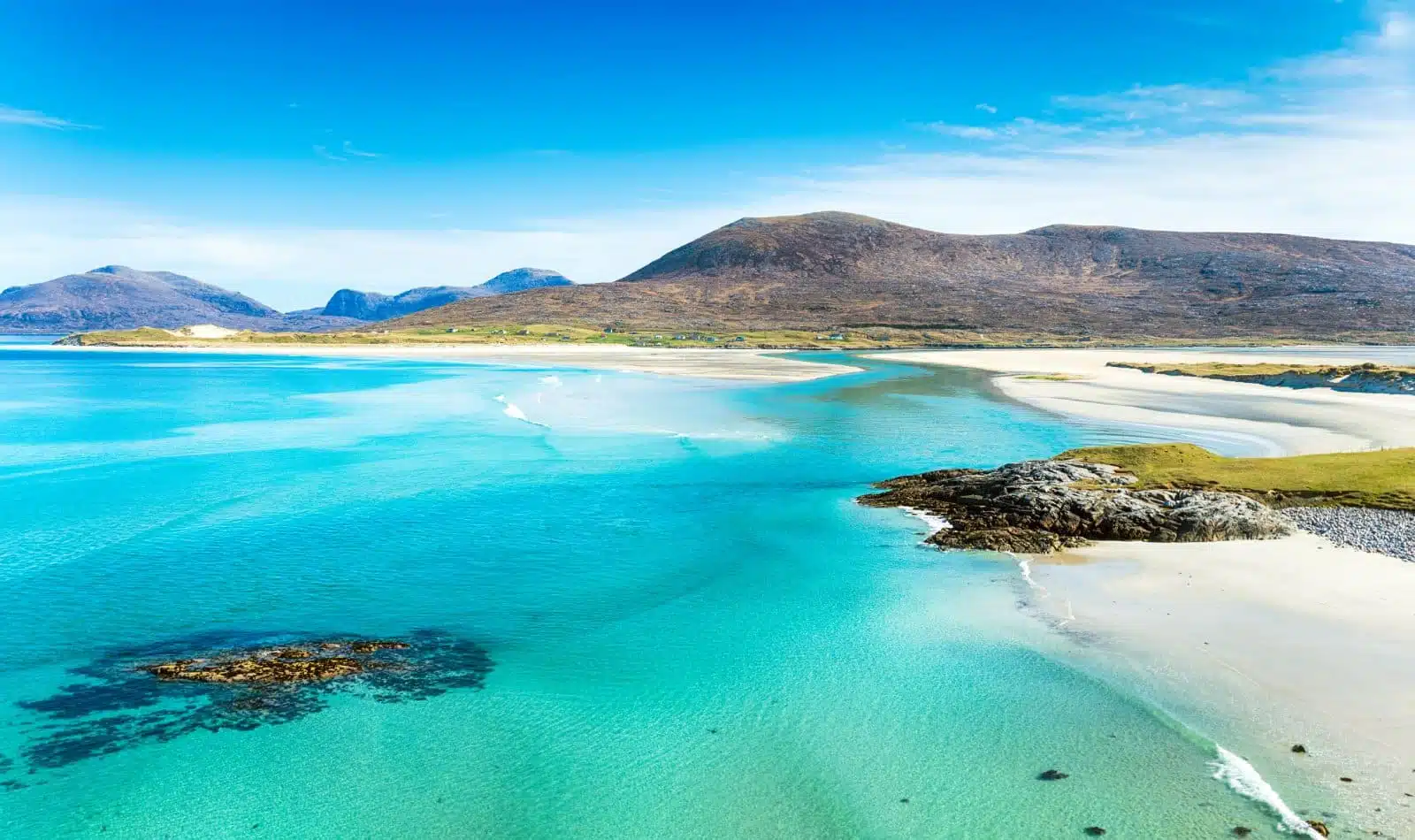
Image Credit: Shutterstock / Helen Hotson
The Outer Hebrides, a chain of islands on the edge of the Atlantic, are defined by their pristine beaches, Gaelic culture, and wildlife. The islands offer some of the most unspoiled natural landscapes in Scotland, from the white sands and turquoise waters of Luskentyre on Harris to Lewis’s rugged, moorland interior. The Callanish Stones, an ancient stone circle on Lewis, provide a link to the islands’ prehistoric past. The Outer Hebrides are also a stronghold of Gaelic language and culture, with music, poetry, and storytelling deeply embedded in the community. The traditional weaving of Harris Tweed, still produced on handlooms in local homes, is a testament to the enduring craftsmanship of the Hebridean people.
Insider’s Tip: Explore the Outer Hebrides by bike. The relatively flat terrain of islands like Harris and the absence of heavy traffic makes for an ideal cycling environment, allowing you to take in stunning landscapes at your own pace.
When to Travel: The best time to visit the Outer Hebrides is from May to August, when the weather is relatively warm and the days are the longest.
How to Get There: Ferries to the Outer Hebrides depart from Ullapool to Stornoway on Lewis and from Uig on Skye to Tarbert on Harris. Flights are available to Stornoway, Benbecula, and Barra from Glasgow, Edinburgh, and Inverness.
4. Isle of Arran

Image Credit: Shutterstock / LouieLea
Often described as “Scotland in Miniature,” the Isle of Arran encapsulates the essence of Scottish landscapes, from rugged peaks to rolling hills and coastal splendor. Goat Fell, the highest point on Arran, offers challenging hikes and panoramic views of the island. The island’s history is showcased at Brodick Castle, a quintessential Victorian Highland estate, and the ancient stone circles at Machrie Moor. Arran is also renowned for its culinary offerings, with local cheese, whisky, and beer reflecting the island’s rich natural resources. The Isle of Arran Distillery in Lochranza provides an insight into the art of whisky making, set against the backdrop of dramatic mountain scenery.
Insider’s Tip: Don’t miss the opportunity to hike up to Glenashdale Falls and the Giant’s Graves. This lesser-known trail offers spectacular views and glimpses into the island’s ancient past.
When to Travel: The ideal time to visit Arran is between April and October, with warmer weather and numerous outdoor activities and festivals.
How to Get There: Arran is accessible by ferry from Ardrossan on the mainland to Brodick, the island’s main town. There is also a ferry service from Claonaig on the Kintyre Peninsula to Lochranza.
5. Isle of Iona

Image Credit: Shutterstock / Heartland Arts
The Isle of Iona, a small island off the southwest coast of Mull, is a place of spiritual significance and natural beauty. Iona Abbey, founded by St. Columba in the 6th century, is one of Scotland’s most sacred sites and a center for pilgrimage. The island’s serene landscapes, with white sandy beaches and crystal-clear waters, offer a sense of peace and tranquility. Iona’s rich ecclesiastical history is complemented by its vibrant community of artists and craftspeople, whose work is inspired by the island’s natural and spiritual heritage. The Iona Heritage Centre provides insights into the island’s history, from its geological formation to its role in the spread of Christianity in Scotland.
Insider’s Tip: Attend a service at Iona Abbey to fully experience the spiritual tranquility that has drawn pilgrims here for centuries. The sense of continuity and peace is palpable, regardless of one’s religious beliefs.
When to Travel: The best months to visit Iona are from May to September, when the weather is more favorable for exploring the island’s historical sites and natural beauty.
How to Get There: Iona is accessible by ferry from Fionnphort on the Isle of Mull. Visitors can reach Mull by ferry from Oban on the mainland.
6. Shetland Islands
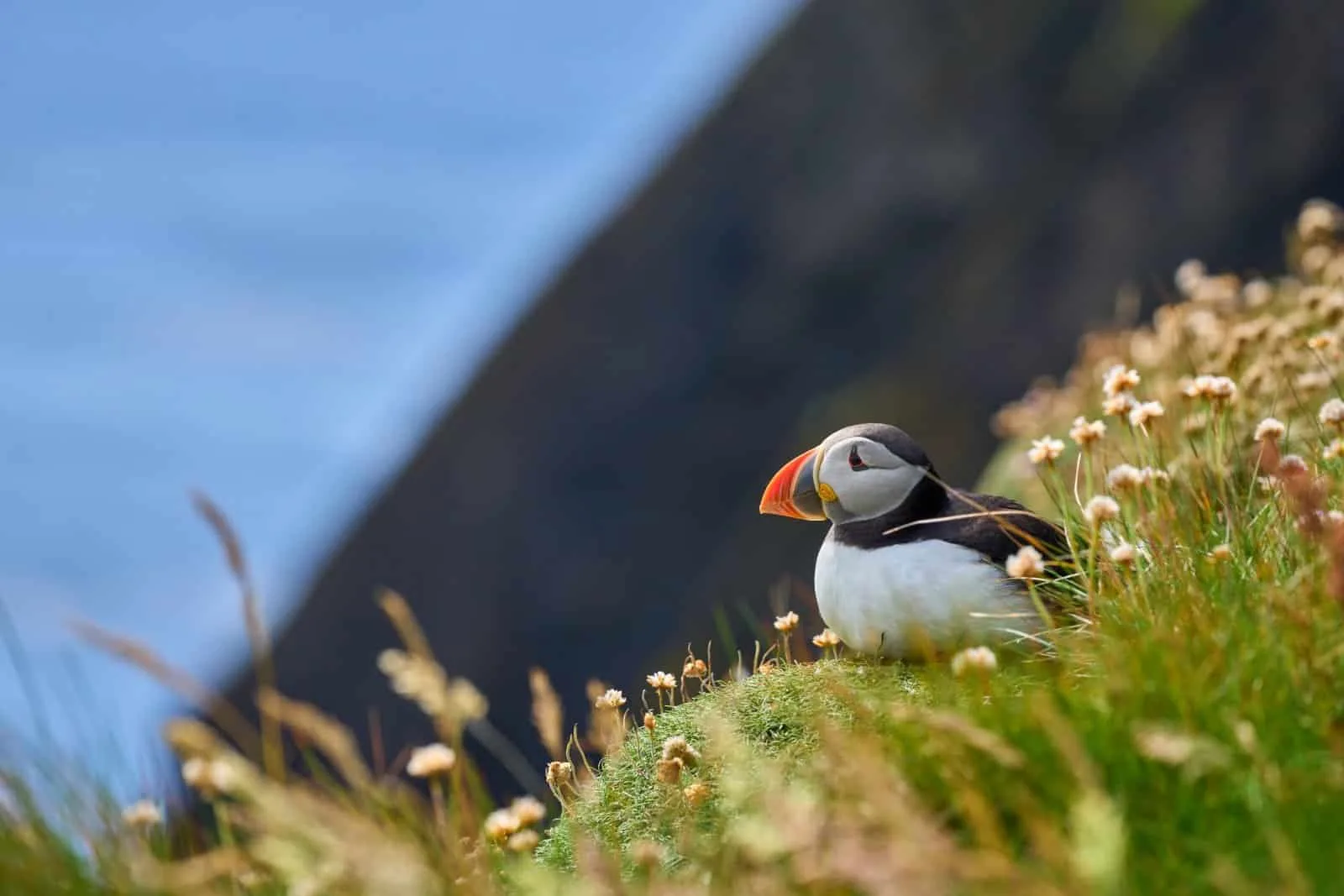
Image Credit: Shutterstock / Karl Weller
The Shetland Islands, located at the crossroads of the North Sea and the Atlantic Ocean, are a mosaic of rugged landscapes, rich Norse heritage, and abundant wildlife. Shetland’s position makes it a prime location for birdwatching, with the Sumburgh Head RSPB reserve offering sightings of puffins, guillemots, and other seabirds. The islands’ Viking legacy is celebrated at the annual Up Helly Aa festival, featuring a torchlit procession and the burning of a Viking longship. Shetland’s archaeological sites, including the well-preserved Iron Age broch of Mousa and the ancient settlement of Jarlshof, provide a window into the islands’ past. The Shetland Museum and Archives in Lerwick offers a comprehensive overview of the islands’ history, culture, and natural environment.
Insider’s Tip: Plan your visit to coincide with the Shetland Folk Festival or the Up Helly Aa Fire Festival for a deep dive into the islands’ vibrant cultural life. These events offer a unique insight into the community spirit and traditions of the Shetland people.
When to Travel: The best time to visit Shetland is from May to August, when the days are longest and the wildlife, especially birds, is most active.
How to Get There: Shetland can be reached by ferry from Aberdeen or Orkney. Flights are available from Edinburgh, Glasgow, Aberdeen, and Inverness to Sumburgh Airport.
7. Isle of Mull
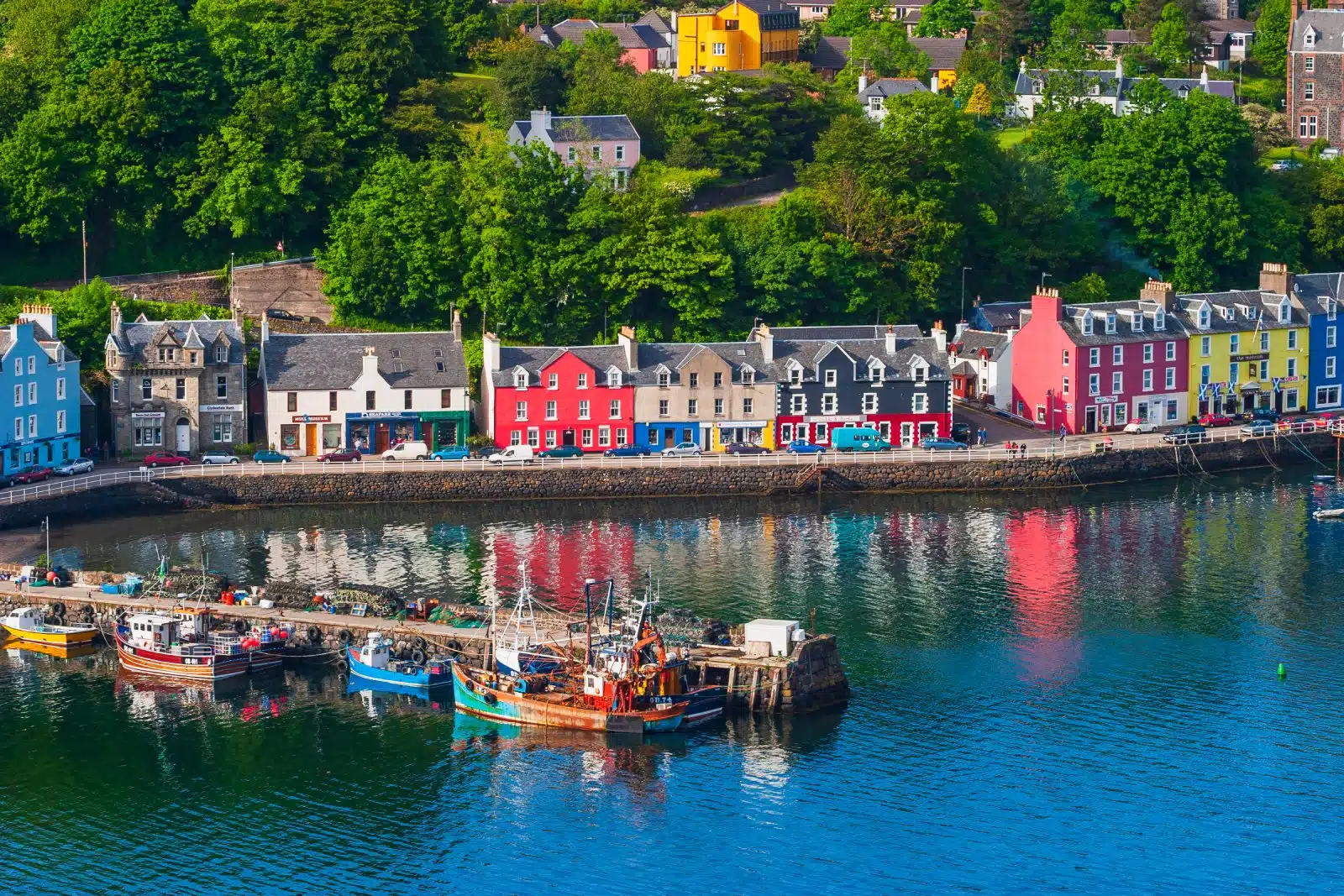
Image Credit: Shutterstock / Lasse Johansson
The Isle of Mull is renowned for its dramatic scenery, wildlife, and historical sites. The island’s varied landscapes, from the rugged cliffs of its coastline to the wooded valleys and moorlands inland, provide habitats for a rich diversity of wildlife, including eagles, otters, and red deer. The colorful waterfront of Tobermory, Mull’s main town, is instantly recognizable and offers a charming base for exploring the island. Standing on a cliff overlooking the Sound of Mull, Duart Castle tells the story of the island’s clan heritage. Mull is also a gateway to the smaller islands of Iona, Staffa, and the Treshnish Isles, each with its unique attractions.
Insider’s Tip: Wildlife enthusiasts must take a boat trip to the Treshnish Isles to see the puffin colonies. The best time to visit is from late April to early August, when the puffins are most active on land.
When to Travel: Mull is best visited between April and October, with widely available wildlife tours and outdoor activities.
How to Get There: Ferries to Mull depart from Oban to Craignure, Lochaline to Fishnish, and Kilchoan to Tobermory.
8. Isle of Jura
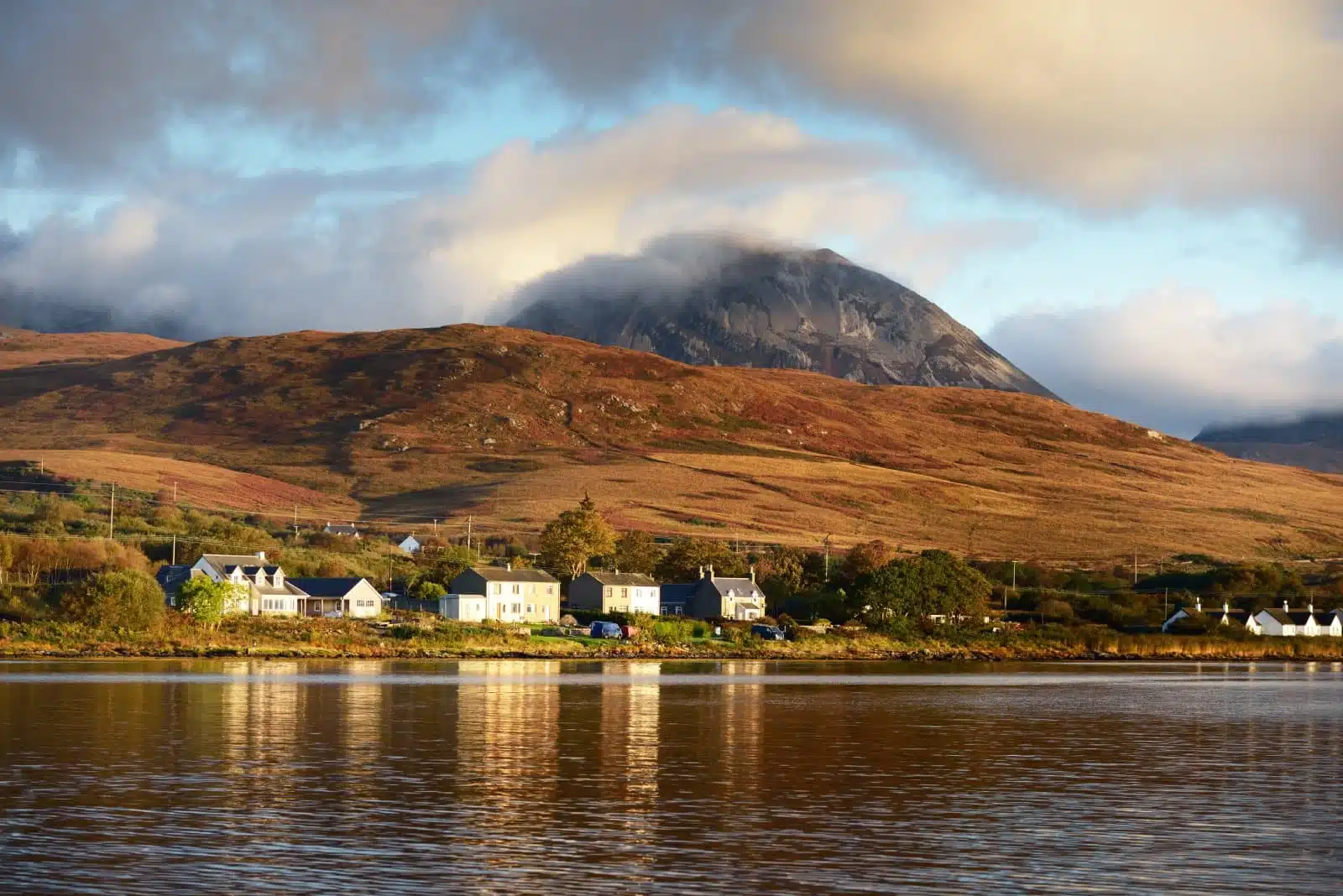
Image Credit: Shutterstock / Aastels
The Isle of Jura, with its imposing Paps of Jura dominating the landscape, is a haven of peace and wilderness in the Inner Hebrides. Known for its sparse population and vast, open spaces, Jura offers a retreat for those looking to escape the hustle and bustle of modern life. The island is famed for its red deer population, which far outnumbers its human inhabitants, and its single distillery, which produces the renowned Jura whisky. The rugged coastline and the island’s single road that stretches from the ferry port to the northern tip make for a dramatic and secluded adventure. George Orwell’s former home, where he wrote “1984,” highlights the island’s inspiring solitude and beauty.
Insider’s Tip: Seek out the Corryvreckan Whirlpool, one of the largest permanent whirlpools in the world, located between Jura and the neighboring island of Scarba. Boat tours offer a safe way to witness this natural wonder up close.
When to Travel: The mild climate from May to September makes it the best time to visit Jura, and it is ideal for hiking, wildlife watching, and enjoying the scenic beauty.
How to Get There: Access to Jura is via a short ferry ride from Port Askaig on the Isle of Islay. Visitors can reach Islay by ferry from Kennacraig on the mainland or by air from Glasgow.
9. Isle of Tiree
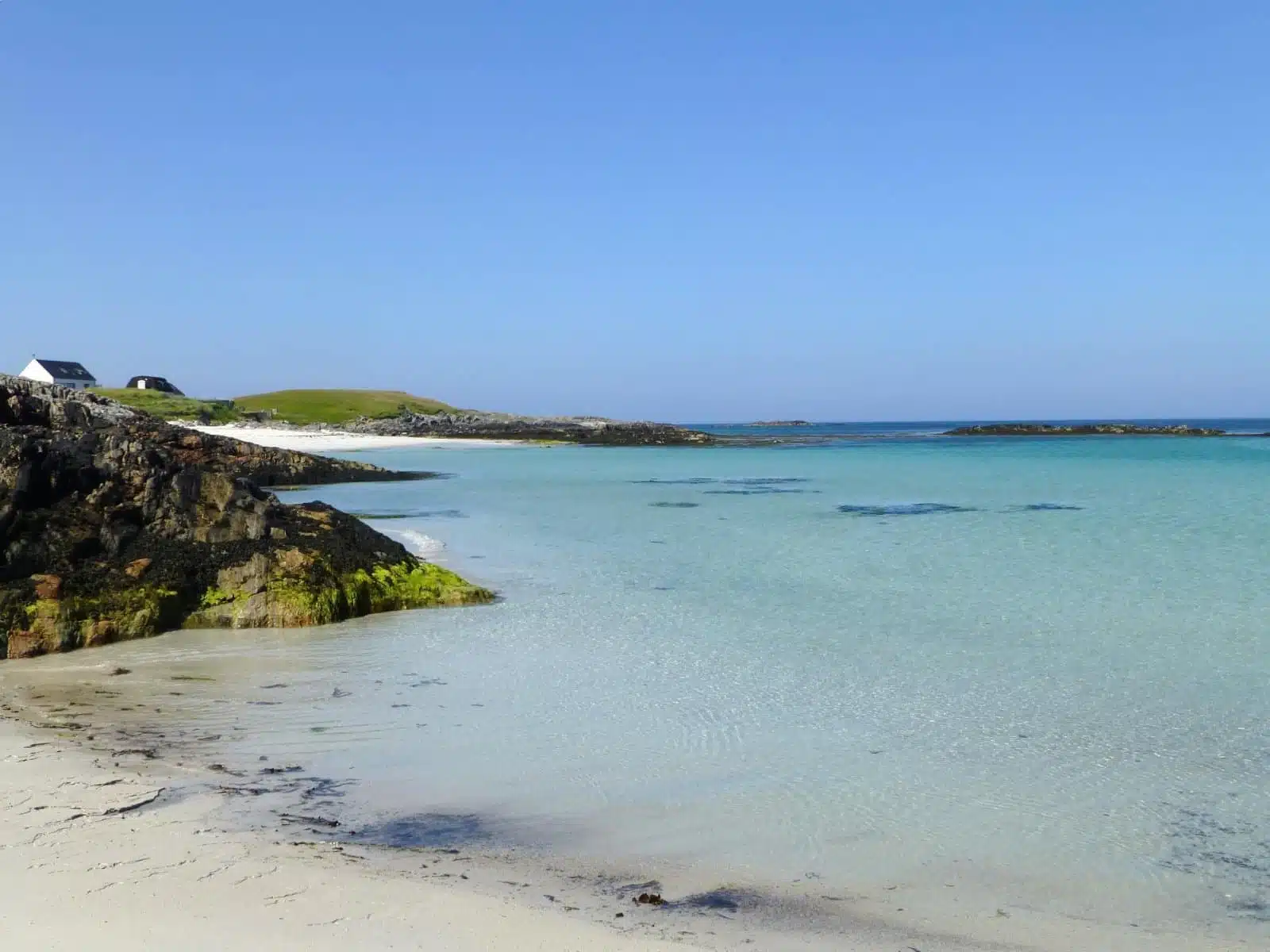
Image Credit: Shutterstock / Alistair MacLean
The Isle of Tiree, the most westerly island of the Inner Hebrides, is renowned for its miles of sandy beaches, vibrant cultural scene, and as a premier windsurfing destination due to its high levels of sunshine and powerful Atlantic winds. Tiree’s relatively flat landscape makes it perfect for cycling and walking, offering panoramic views of the surrounding ocean and neighboring islands. The island’s rich history is evident in its ancient brochs and standing stones, while the annual Tiree Music Festival brings a contemporary twist, showcasing local and national musicians. The island’s community is vibrant and welcoming, with local crafts and produce reflecting the Tiree way of life.
Insider’s Tip: Visit in October to experience the Tiree Wave Classic, the longest-running professional windsurfing event in the UK. Even if you’re not participating, the atmosphere is electric, and the island showcases its best side.
When to Travel: Summer months, particularly around the Tiree Music Festival in July, offer the best experience, with favorable weather and a range of activities.
How to Get There: Tiree is accessible by ferry from Oban, which provides a scenic journey to the island. There are also flights available from Glasgow to Tiree Airport.
10. Isle of Harris
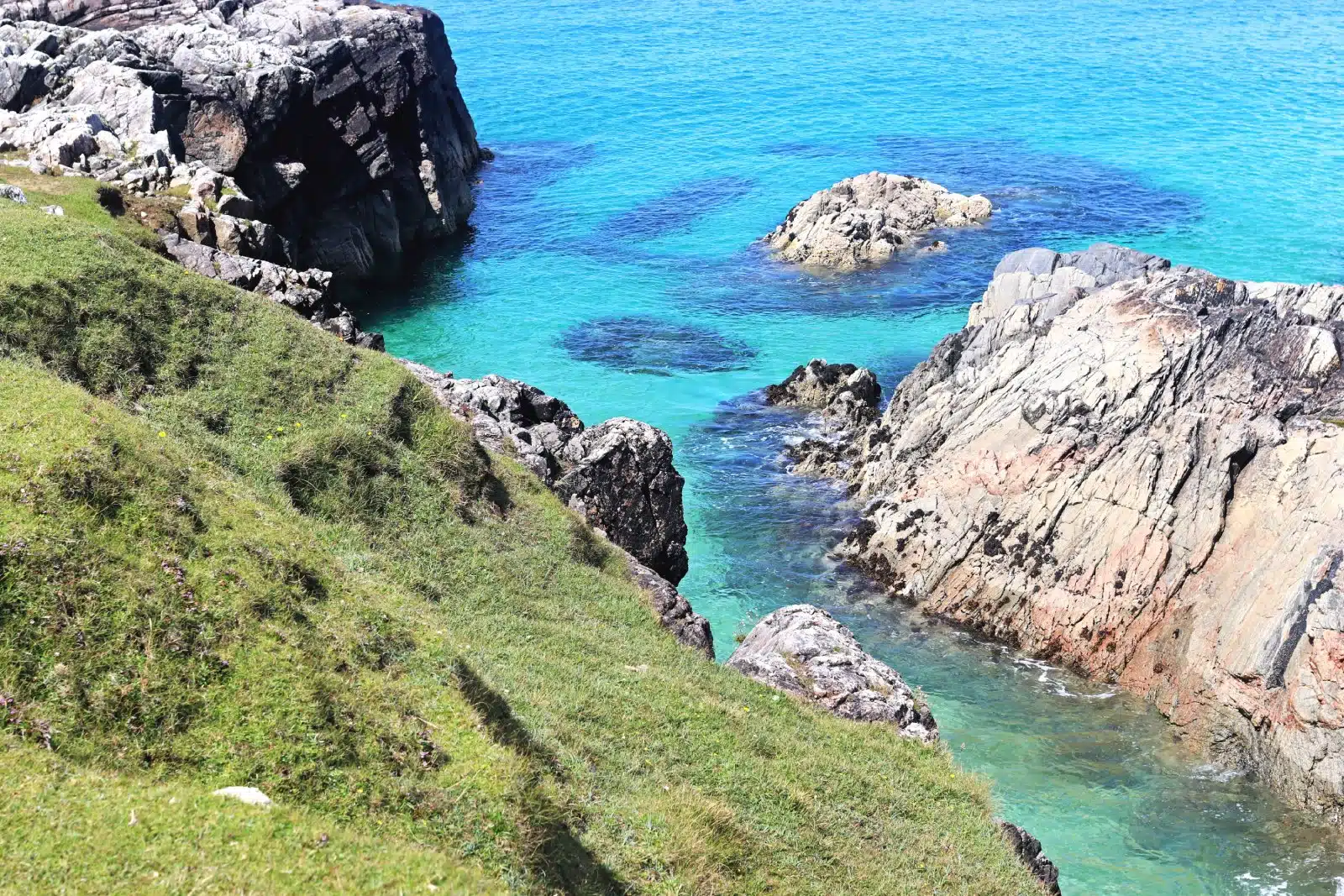
Image Credit: Shutterstock / Jim Byrne Scotland
The Isle of Harris is part of the Outer Hebrides and is famous for its stunning landscapes, ranging from the white sandy beaches of Luskentyre and Scarista to the rugged mountains of the North Harris hills. Harris is also known for the Harris Tweed industry, with the Harris Tweed Authority based in the main settlement of Tarbert. The island’s rich cultural heritage has numerous galleries and workshops showcasing local art and crafts. The east coast of Harris, with its lunar-like landscape of rocky bays and inlets, offers a stark contrast to the idyllic beaches and provides excellent opportunities for kayaking and exploring.
Insider’s Tip: Sample the local delicacy of Stornoway black pudding, renowned throughout Scotland. Its rich flavor is a testament to the island’s culinary heritage and is best enjoyed in a traditional Scottish breakfast.
When to Travel: May to September is ideal for visiting Harris, with better weather for outdoor activities and exploring the island’s diverse landscapes.
How to Get There: Harris is accessible by ferry from Uig on the Isle of Skye to Tarbert. There are also flights to Stornoway on the Isle of Lewis, with road connections to Harris.
The Bottom Line

Image Credit: Shutterstock / Dragon Images
The Scottish Isles’ breathtaking landscapes, rich history, and vibrant culture offer an unparalleled experience for travelers seeking to explore beyond the beaten path. Each island presents its own unique set of wonders, from the mystical standing stones of Orkney to the windswept beaches of Tiree and the cultural richness of Harris. Whether you’re drawn by the call of the wild, the allure of ancient history, or the warmth of island communities, the Scottish Isles have something to offer every traveler. As you plan your journey to these remote and beautiful shores, remember that the true essence of the Isles lies in their ability to blend the majesty of nature with the depth of human history. Let this guide be your compass as you embark on an adventure that promises to be as enriching as it is breathtaking.
More From The Green Voyage
Top 10 Trending Travel Destinations 2024
6 Essential Banking Apps for International Travel – Managing Your Finances on the Go
Traveling With Kids – 10 Tips to Create Memorable Family Holidays
The post Exploring the Scottish Isles 2024 first appeared on The Green Voyage.
Featured Image Credit: Shutterstock / Shaiith.
For transparency, this content was partly developed with AI assistance and carefully curated by an experienced editor to be informative and ensure accuracy.
Tips for Trip Success
Book Your Flight
Find an inexpensive flight by using Kayak, a favorite of ours because it regularly returns less expensive flight options from a variety of airlines.
Book Your Hotel or Special Accommodation
We are big fans of Booking.com. We like their review system and photos. If we want to see more reviews and additional booking options, we go to Expedia.
You Need Travel Insurance!
Good travel insurance means having total peace of mind. Travel insurance protects you when your medical insurance often will not and better than what you get from your credit card. It will provide comprehensive coverage should you need medical treatment or return to the United States, compensation for trip interruption, baggage loss, and other situations.Find the Perfect Insurance Plan for Your Trip
